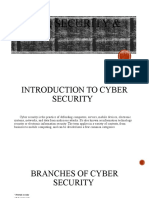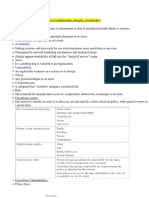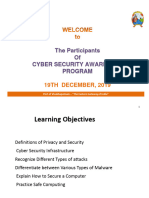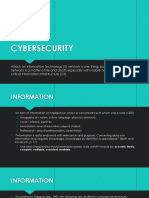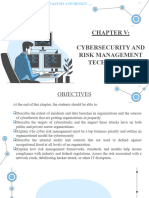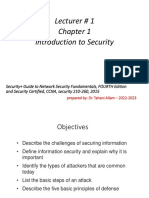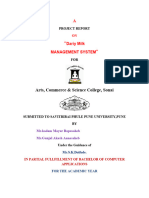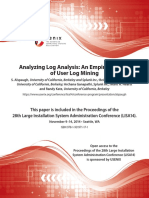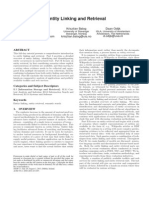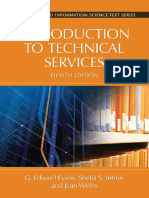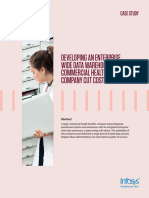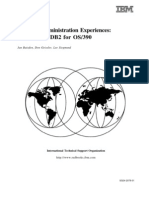0% found this document useful (0 votes)
44 views33 pagesCPE 513 Module 4 - CyberSecurity
This document discusses various aspects of cybersecurity including cybersecurity concepts, cybercrimes, cyberlaws, information security, network security, access control, and intrusion prevention. It describes key cybersecurity domains such as cybersecurity, cybercrimes and cyber laws, information security and risk management, security architecture and design, telecommunications and network security, and control access. Common cyberattacks, principles of information security, and security controls are also outlined.
Uploaded by
gagagagCopyright
© © All Rights Reserved
We take content rights seriously. If you suspect this is your content, claim it here.
Available Formats
Download as PDF, TXT or read online on Scribd
0% found this document useful (0 votes)
44 views33 pagesCPE 513 Module 4 - CyberSecurity
This document discusses various aspects of cybersecurity including cybersecurity concepts, cybercrimes, cyberlaws, information security, network security, access control, and intrusion prevention. It describes key cybersecurity domains such as cybersecurity, cybercrimes and cyber laws, information security and risk management, security architecture and design, telecommunications and network security, and control access. Common cyberattacks, principles of information security, and security controls are also outlined.
Uploaded by
gagagagCopyright
© © All Rights Reserved
We take content rights seriously. If you suspect this is your content, claim it here.
Available Formats
Download as PDF, TXT or read online on Scribd
/ 33








